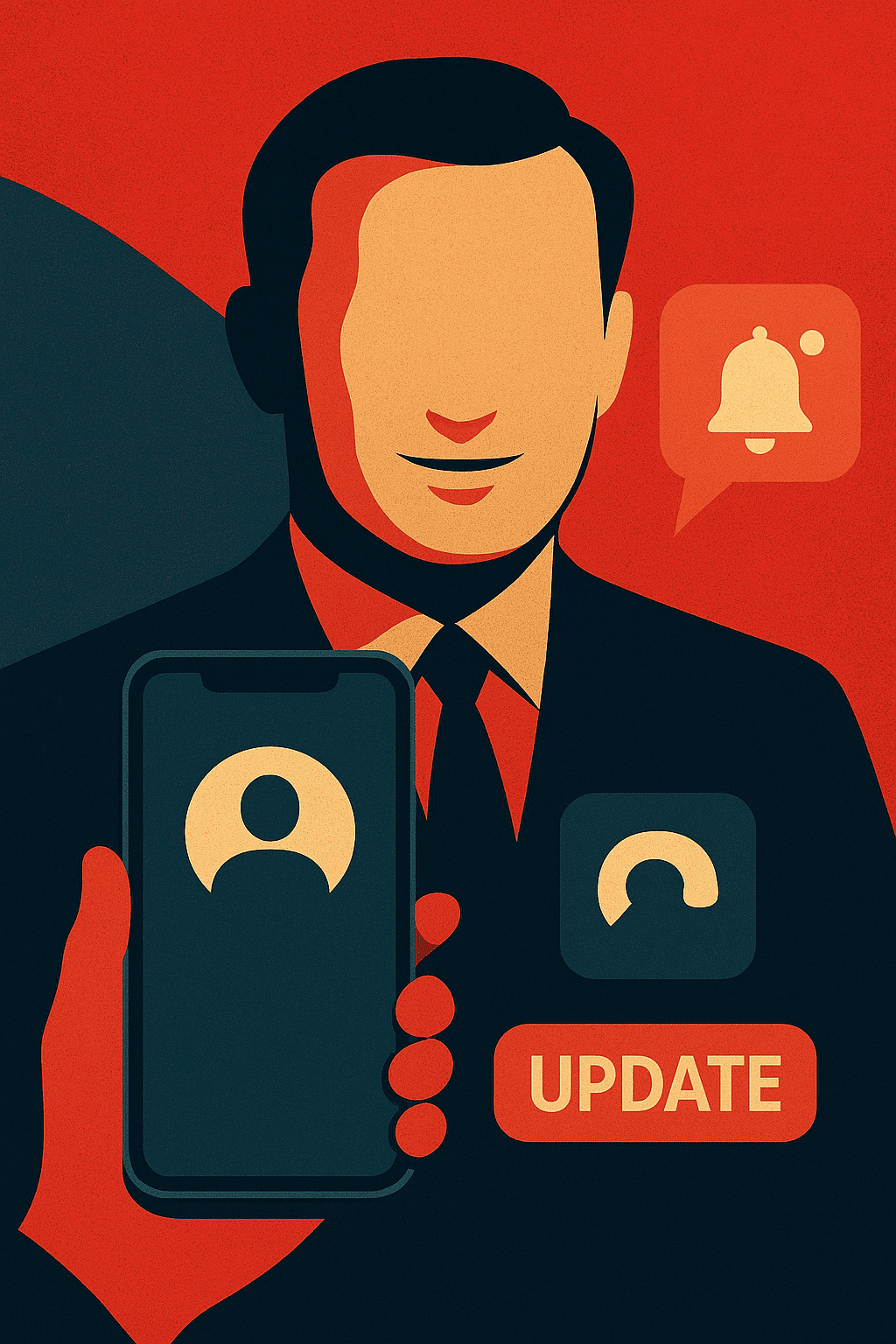In the 20th century, dictatorship carried the image of soldiers in uniforms, parades, and propaganda posters. Power was enforced through fear: gulags, firing squads, and mass surveillance by informants. Today, authoritarianism no longer enters the public square with tanks or bayonets. It arrives on your phone screen—through apps, notifications, and sleek design.
Modern totalitarianism does not seek to terrify; it seeks to please. Its goal is not to break the citizen with violence but to seduce with convenience.
1. From Gulags to Push Notifications
Traditional regimes ruled by coercion. But in the digital age, control is voluntary. People willingly hand over their personal data to governments and corporations, often under the promise of efficiency and personalization.
- In China, the social credit system is already a functioning reality. A citizen’s ability to buy train tickets, access loans, or even secure a job can depend on their behavioral score.
- In the United States and Europe, companies like Google, Amazon, and Meta maintain vast digital dossiers that can predict a person’s choices before the individual consciously makes them.
The prison cell has been replaced by the smartphone app, the barbed wire by a user agreement.
2. Logos Replace Uniforms
In the past, authoritarianism revolved around the cult of the leader. Today, it revolves around the cult of the brand. Apple, Google, TikTok, and Amazon command loyalty, devotion, and dependency at a scale dictators could only dream of.
- Over 2 billion WhatsApp users rely on one company’s decision whether their messages remain private or are shared with authorities.
- TikTok’s algorithm, designed in Beijing, influences political opinions and cultural trends across continents.
In the 20th century, citizens were forced to attend party meetings. In the 21st, they scroll endlessly through curated feeds—obedient to a machine-driven logic hidden behind logos and slogans.
3. UX Design as Subtle Violence
UX designers are the new engineers of consent. They shape how we act by shaping how we click, swipe, and stay engaged.
- Facebook deliberately engineered dopamine-driven feedback loops to maximize screen time.
- Netflix auto-plays the next episode before you can reconsider, erasing the pause for free choice.
What looks like harmless design is in fact behavioral control. The interface itself becomes an invisible chain.
4. Voluntary Servitude
The French philosopher Étienne de La Boétie wrote about voluntary servitude as early as the 16th century: people often enslave themselves when they mistake comfort for freedom. This prophecy has come alive in the digital age.
- Users accept invasive surveillance in exchange for GPS convenience.
- They tolerate intrusive ads for the sake of “free” services.
- They move their files to cloud storage, surrendering control over personal archives.
The new regime doesn’t ban freedom outright—it simply makes freedom inconvenient, expensive, and impractical.
5. A Soft but Total System
Where classical totalitarianism relied on rigid hierarchies (leader → party → people), modern digital authoritarianism operates as a network: governments, corporations, and data brokers exchange information, leaving the individual naked before power.
Concrete cases include:
- Pandemic-era Europe, where Google and Apple data powered digital movement tracking at the request of governments.
- The Pegasus spyware, developed by Israel’s NSO Group, which turned smartphones into listening devices. It wasn’t only used against terrorists but also against journalists and activists.
The Smiling Dictator
Today’s dictator does not wear a uniform or deliver fiery speeches. He arrives in the form of a notification, a pop-up, or a glowing logo. He smiles at you from a billboard and promises to “improve your user experience.”
But make no mistake: his control is deeper than that of Hitler or Stalin. He rules not only over actions but over desires, habits, and attention spans.
The urgent question for every citizen is simple: Will you sacrifice freedom for convenience—or will you accept discomfort in order to remain free?



